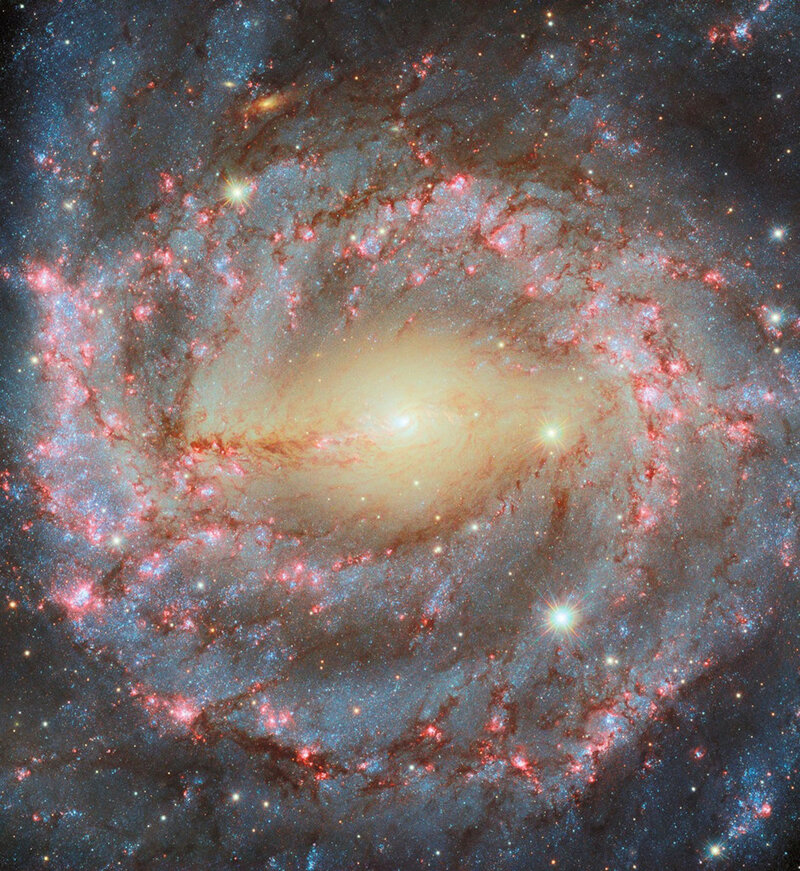Posted on Dec 26, 2024
APOD: 2024 December 26 - Grand Spiral NGC 5643
338
28
3
15
15
0
Good morning on this Boxing Day, Rallypoint. Welcome to the Astronomy Picture of the Day (APOD) for December 26, 2024.
This composite image comes to us from NASA's sister organization the European Space Agency (ESA). NGC 5643 was first discovered by Scottish astronomer James Dunlop in 1826 from his observatory in Australia. The most interesting features of this galaxy (to scientists that study it) are invisible to the human eye...hence the composite image. Compare today's photo to the previous APOD from October 5th, 2020 and you'll see what I mean.
Ultraviolet and X-ray images and spectra of NGC 5643 show that the galaxy hosts an active galactic nucleus: an especially bright galactic core powered by a supermassive (over 100,000 times larger than our Sun) black hole. The x-ray radiation detected from the center suggests the presence of the black hole. The pink regions sprinkled throughout the swirling galactic arms indicate areas where new stars are being formed. The spiral arms wind from a yellowish central region dominated by light from old stars and are traced by a tapestry of dust lanes and young blue stars. A Christmas wreath indeed.
This composite image comes to us from NASA's sister organization the European Space Agency (ESA). NGC 5643 was first discovered by Scottish astronomer James Dunlop in 1826 from his observatory in Australia. The most interesting features of this galaxy (to scientists that study it) are invisible to the human eye...hence the composite image. Compare today's photo to the previous APOD from October 5th, 2020 and you'll see what I mean.
Ultraviolet and X-ray images and spectra of NGC 5643 show that the galaxy hosts an active galactic nucleus: an especially bright galactic core powered by a supermassive (over 100,000 times larger than our Sun) black hole. The x-ray radiation detected from the center suggests the presence of the black hole. The pink regions sprinkled throughout the swirling galactic arms indicate areas where new stars are being formed. The spiral arms wind from a yellowish central region dominated by light from old stars and are traced by a tapestry of dust lanes and young blue stars. A Christmas wreath indeed.

APOD: 2024 December 26 - Grand Spiral NGC 5643
Posted from apod.nasa.gov
Edited 13 d ago
Posted 13 d ago
Responses: 3
Read This Next




 NASA
NASA Space
Space Science
Science Astronomy
Astronomy Photography
Photography


